This article contains affiliate links. We may earn a small commission if you purchase via these links.
The inherent benefits of a monocular include minimal weight and compact size.
From micro-sized units to higher powered or zoom models, the best monocular is the one that gets used.
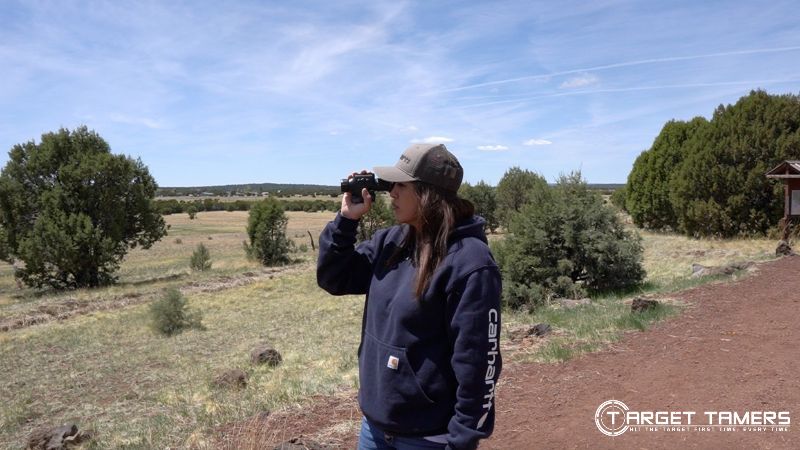
With that said, in my efforts to rally my top monocular recommendations, I considered multiple applications from birding to hunting and surveillance.
I also set a wide net for multiple price points from $20 to $500.
My Top Monocular Recommendations
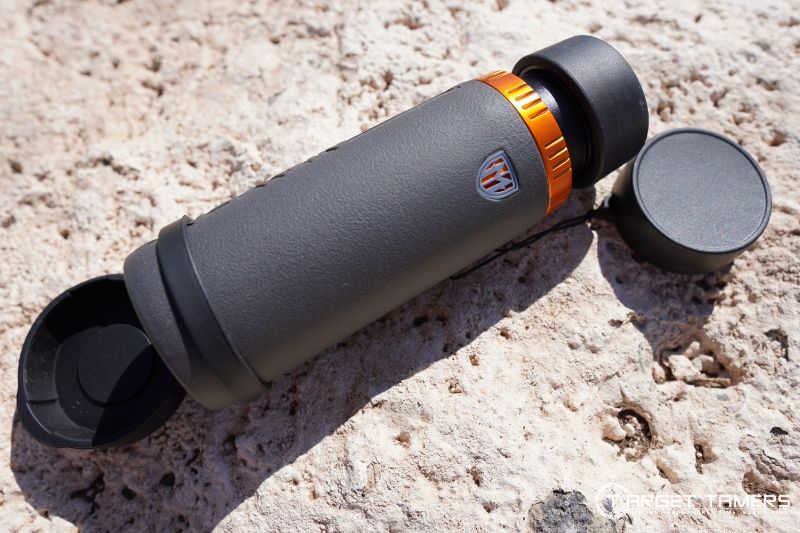
Maven CM.1 8x32 Monocular
ED glass and dielectric coatings
Excellent build quality
Lightweight and weatherproof
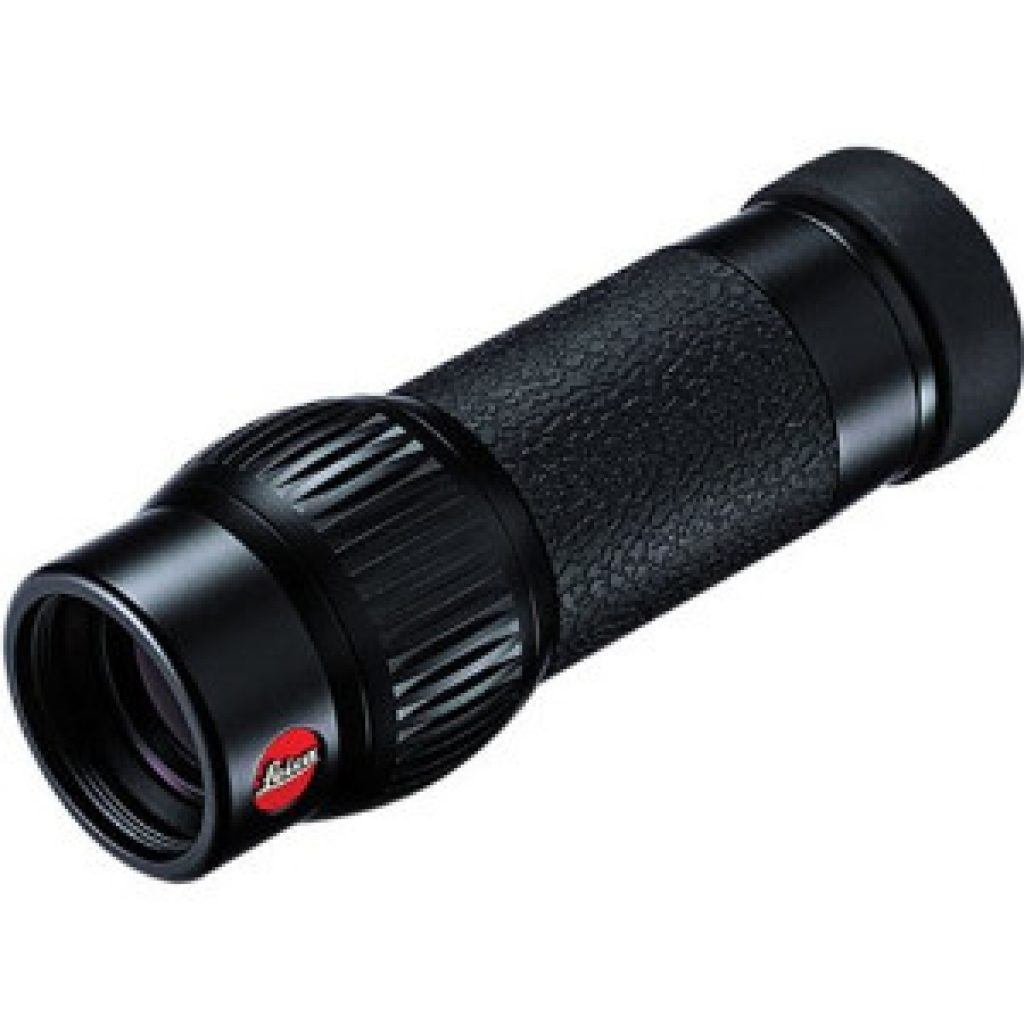
Leica Monovid 8x20 Monocular
Close focus of 1.8 m (25-30 cm with close focus attachment)
Wateproof to 5 m
Compact
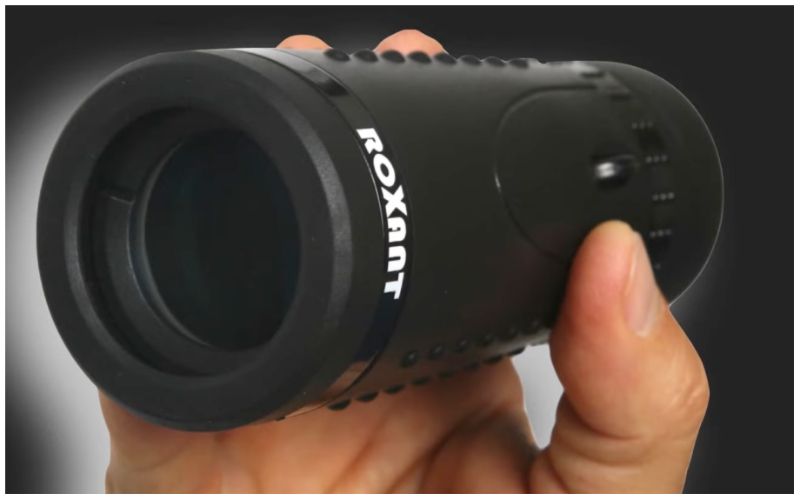
Roxant Grip 6x30 Monocular
Twist-up eyecup for ideal eye relief
20 mm eye relief
Wide FOV (180 m)
Why Trust Us?
After hundreds of hours of hand-testing monoculars in the field and at the range, and thousands more hours researching and writing about them, we feel we earn the title of experts when it comes to optics!
We purchase as many of the optics for our tests as possible, and run them through their paces to make sure they will perform at the range and in the field.
Our combined decades of experience from bird watching and hunting, to big game hunting and competitions has been integral in putting together this round-up of the best budget monoculars.
Get the inside scoop on how we test optics here.
Most monoculars in my lineup are intended to be used as a handheld unit. The thing about a monocular is that they're easily portable and convenient to use. Being inherently compact and lightweight is its primary advantage over binoculars.
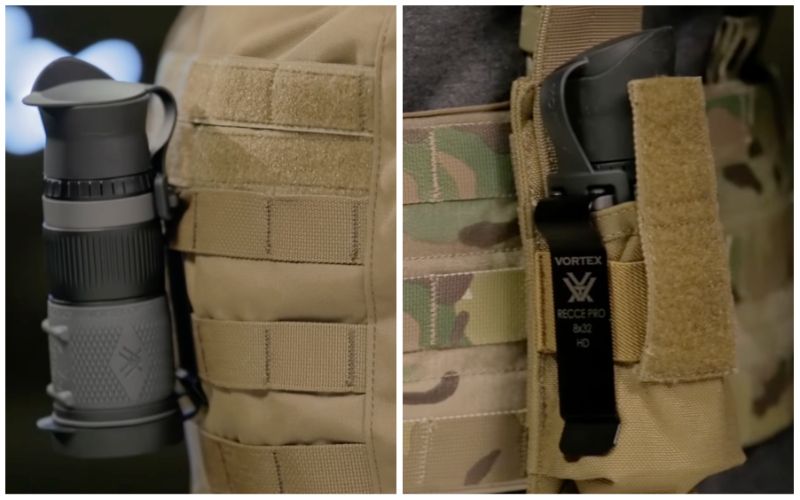
Many buyers are ordinary people who want something affordable, portable, easy to use, and that works without issue.
Not every buyer is out to spend a fortune on an expensive unit.
Many of my budget recommendations can be used for everything from sightseeing, stargazing, and hiking to sports watching and target shooting.
But, if you happen to be on the lookout for a high-end monocular for hunting, professional, and defense applications, I have you covered too.
| IMAGE | PRODUCT | DETAILS | |
|---|---|---|---|
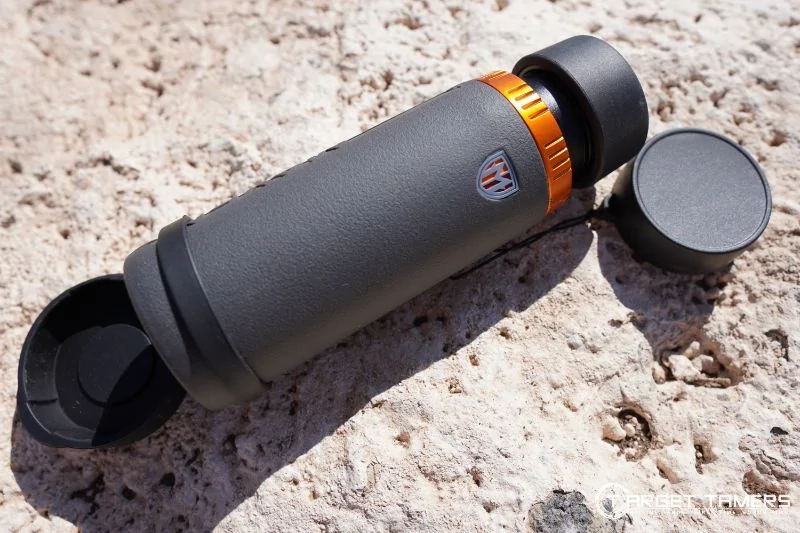 | Maven CM.1 |
| CHECK PRICE |
 | Roxant Grip Scope |
| CHECK PRICE |
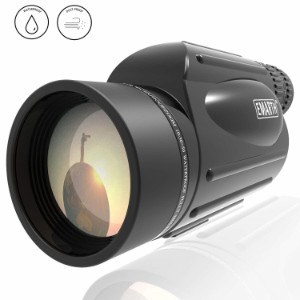 | Emarth Tech Zoom 10-30X50 |
| CHECK PRICE |
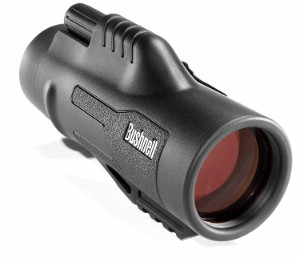 | Bushnell Legend Ultra HD |
| CHECK PRICE |
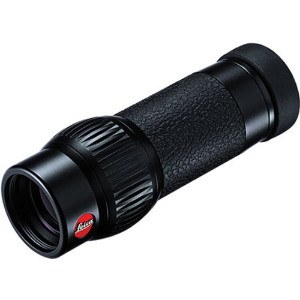 | Leica Monovid 8X20 |
| CHECK PRICE |
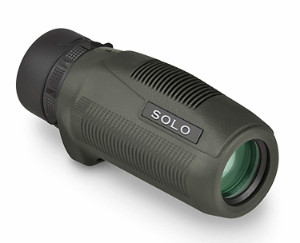 | Vortex Solo 10X25 |
| CHECK PRICE |
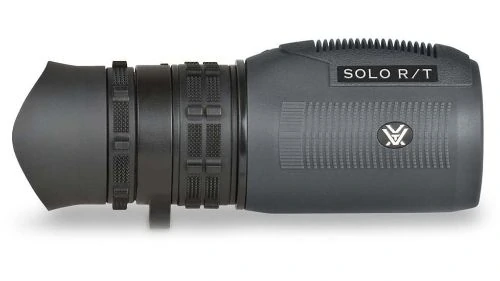 | Vortex Solo R/T |
| CHECK PRICE |
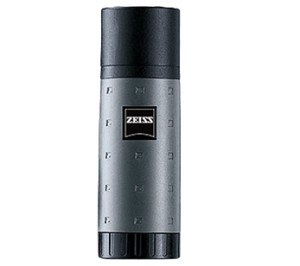 | Zeiss Mono 6X18 T |
| CHECK PRICE |
 | Carson BlackWave |
| CHECK PRICE |
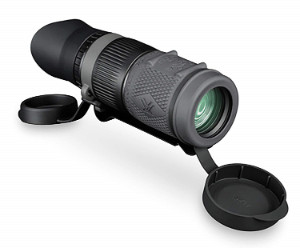 | Vortex Recce Pro HD 8X32 |
| CHECK PRICE |
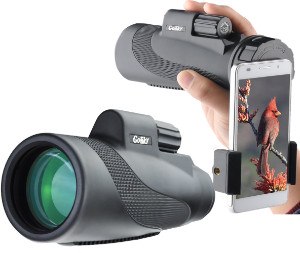 | Gosky Titan 12X50 |
| CHECK PRICE |
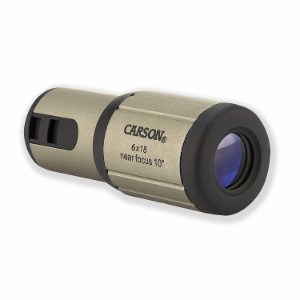 | Carson CloseUp 6X18 |
| CHECK PRICE |
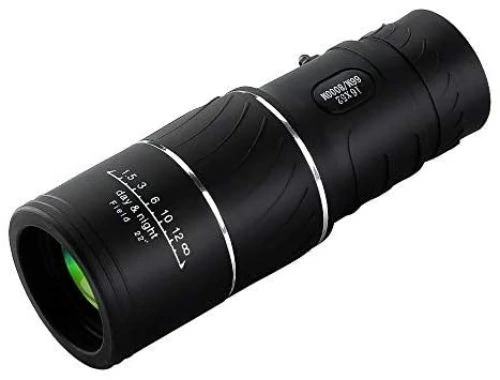 | Archeer 16x52 |
| CHECK PRICE |
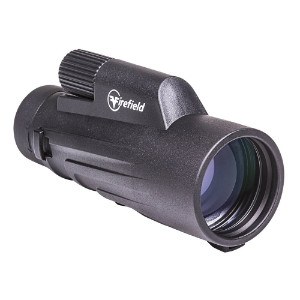 | Firefield Siege 10X50 |
| CHECK PRICE |
Top 14 Best Monocular Reviews
1. Maven CM.1 8x32 - Best Value for Money

Monoculars are known for their small package, but the only real small thing about the Maven monocular is its price point. Offering much more than it has a right to, the CM.1 is easily the best monocular for the money.
Pros:
- Price
- ED glass
- Prism coatings
- Weatherproof
- Lightweight
Cons:
- No tripod mountable
When I field tested the CM.1, I discovered that it’s right on par with high-end monoculars in the market - and yet it's less than $200! I was expecting something more in line with cheaper alternatives but was proved wrong right from unboxing.
The build quality is excellent as it feels grippy and rugged. Made with a polymer frame, nitrogen gas-purged chamber, and water-sealed, the CM.1 is not shy of the outdoors.
The glassing experience is what sold me on my field tests. The ED glass and dielectric prism coated benefits are immediately obvious. This made glassing for birds, wildlife, and people a comfortable and enjoyable activity.
With just one barrel to use, it’s fast and covert to employ. This may be helpful for law enforcement. In fact, my local law enforcement agency checked it out and found it to be a handy tool for observation.
As a mid-range monocular with an entry-level price point, the CM.1 is a worthy choice of optic for any recreational and observation activities you may have in mind.
2. Roxant Grip Scope Review - Best Budget Monocular

The Roxant Grip Scope monocular has several thousand buyers and a proven track record behind its name. As an inexpensive scope, can it really be the bargain it's intended to be?
Pros:
- Price
- Compact
- No-slip grip
- BaK-4 glass
- Retractable eyepiece
Cons:
- Focusing issues
The Grip Scope is a compact, mini device and has a lot going for it. It's obviously a bargain buy for its low price, I recommend it for camping, bird watching, and some neighborly spying.

Even though it's basic with entry-level quality, the Roxant has quality. As a 6x30 monocular, it's just compact enough to forfeit the process of having a retractable eyepiece. But I like that instead of cheap, fold-up types that never stay up, they install a twist-up eyecup to help the user achieve ideal eye relief with or without glasses. By the way, actual eye relief is a long 20 mm.
BaK-4 glass makes up the prism assembly, and air-to-glass surfaces are finished with fully multi-coated coatings. A focus rings allows you to adjust the monocular to get the sharpest, best sight picture possible. As for its "wide view" claims, the Roxant monocular actually lives up to its claim. Field of view is 180 m at 1000 m which I think is pretty darn good for a monocular.
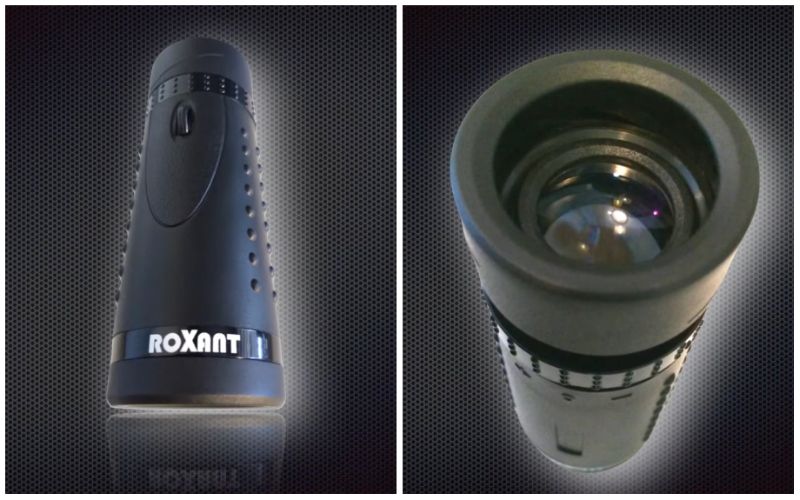
However, there are many buyers that are using the retractable eyepiece incorrectly or mistakenly assuming it's the focus mechanism. This has caused a lot of confusion in acquiring proper focus. I recommend perusing the easy-to-read instructions before claiming the Roxant is defective.
Considering the Grip Scope is under $100, is compact, and has a very versatile design, it certainly earned its place as top monocular in my lineup!
3. Emarth Tech Zoom 10-30X50 Review - Best Zoom Monocular
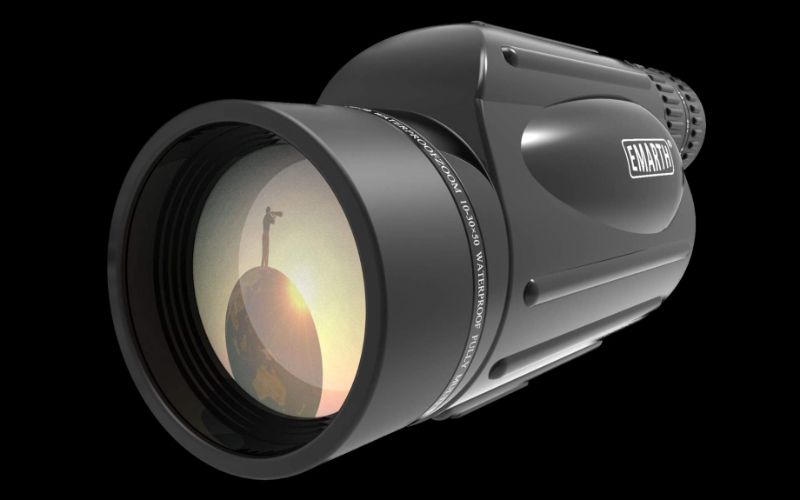
As a variable power handheld scope, you can imagine the convenience and benefits the Emarth Tech monocular will bring to your next hunt, bird watching session, or safari adventure.
Pros:
- Price
- Zoom power
- Good eye relief
- Fully multi-coated
- IPX7 rating
Cons:
- Narrow field of view
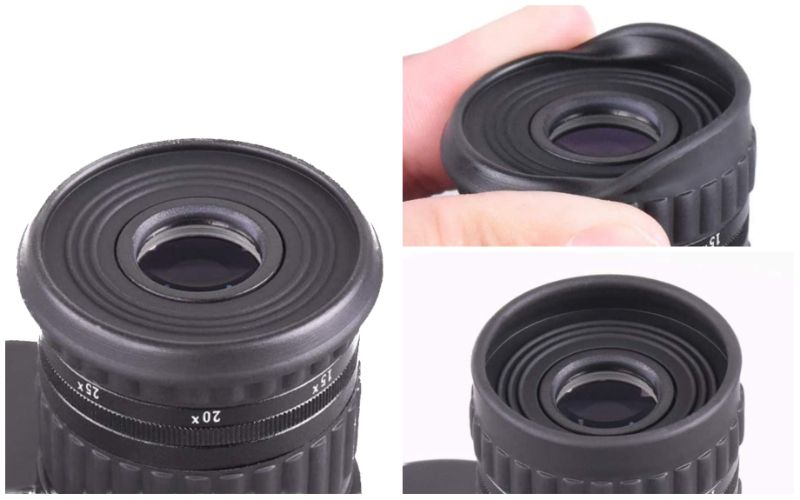
High quality zoom monoculars are tough to produce. From my experience, you will not find a high-end zoom monocular outside of expensive spotting scopes. If you're after the variable power of a cheap monocular for purely recreational purposes, the Emarth 10-30x50 may be for you.
Although the field of view is seriously compromised (71-35 m @1000 m), buyers have said that the Emarth scope is capable of reaching 30x zoom. So the compromise for having high variable power is the FOV.
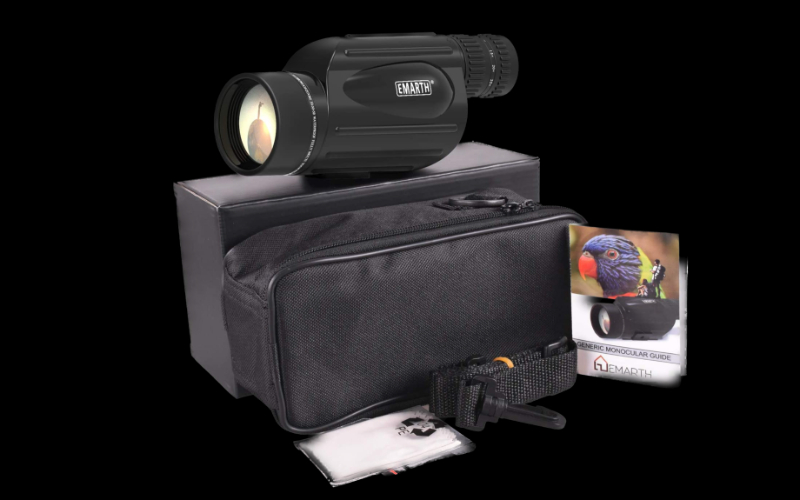
Since its compact at 8 x 4 x 3" and is lightweight at 1 lb, I'd recommend mounting to a tripod for an extra steady image for high magnification use.
Fully multi-coated optics, a BaK-4 Porro prism, a large 50 mm objective lens diameter, and 15.4-19.5 mm eye relief puts it on par with other decent monoculars in this price range.
Thanks to its low price tag, comparable quality to other similar monoculars, and its fast-growing popularity with the masses, I think the Emarth Tech Zoom monocular has earned recognition.
4. Bushnell Legend Ultra HD Review - Best Monocular Under $200
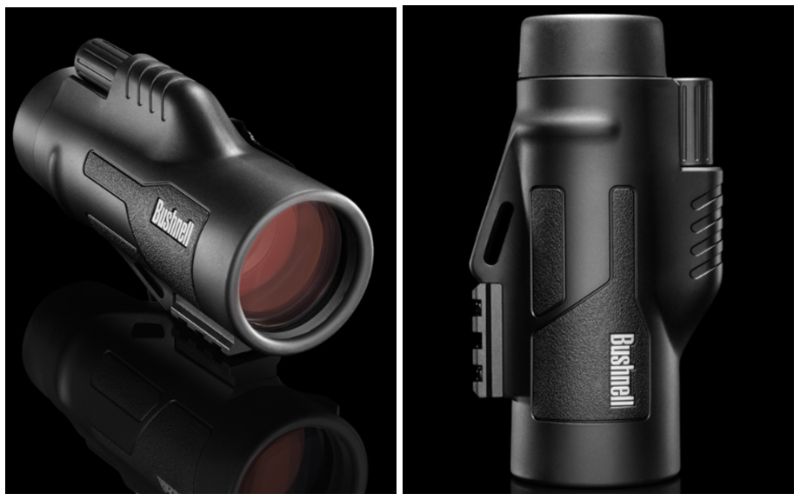
The Legend Ultra HD monocular has trusted optics, multiple features, and specs to suit almost every buyer that needs a durable and sharp set of eyes.
Pros:
- Lightweight/compact
- ED Prime glass
- PC-3 Phase Coating
- Ultra Wide Band Coating
- RainGuard HD
Cons:
- Price
As you can see, the optics on this monocular are impressive. To start with, it has a roof prism assembly with BaK-4 glass that includes ED Prime (Extra-low Dispersion) elements to provide HD (High Definition) image quality.
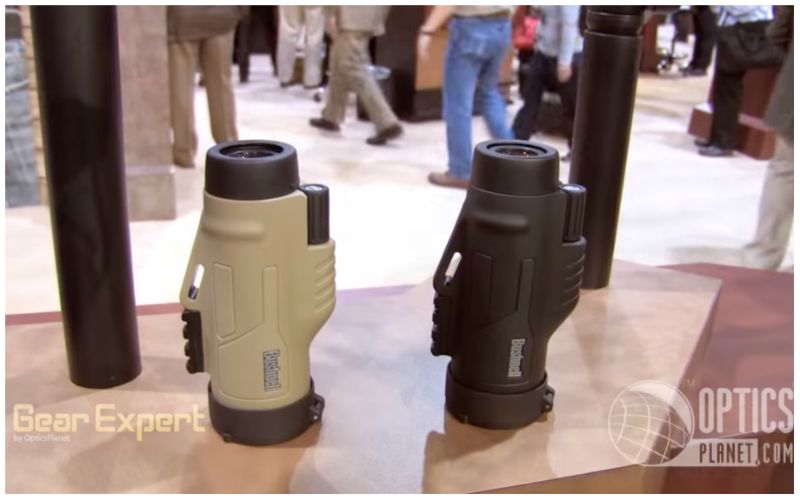
But, a roof prism optic wouldn't mean much if the process wasn't complete with PC-3 Phase Coating technology. What is it? It's a special coating that gets applied to the prism to improve contrast and resolution.
Since Bushnell is going all out on glass, I like that they also included their exclusive Ultra Wide Band Coating. It consists of applying 60 layers of prism assembly coatings to boost maximum light transmission for the brightest sight picture you can possibly have.
With my optical expectations at this point, Bushnell also coats the objective lens with their RainGuard HD to protect integrity of your sight picture and lens from rain, snow, mud, dirt, etc. For a hunting worthy scope, I really like that it's fog and waterproof with an IPX7 rating.
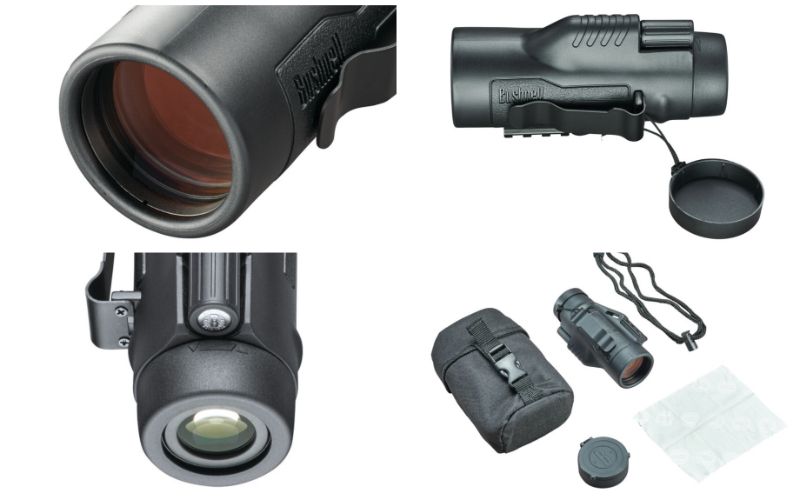
Additional features include the twist-up eyecups, a Picatinny rail, and a carry clip. It's a high power monocular with 10x magnification and a 42 mm objective lens, and it's half the weight and half the cost of a 10x42 binocular with the same features.
Even so, I will point out that it's more expensive than cheaper alternatives. At least the cost has been invested in the optic plus it's covered by the Bushnell Ironclad warranty.
5. Leica Monovid 8X20 Review - Best for Surveillance
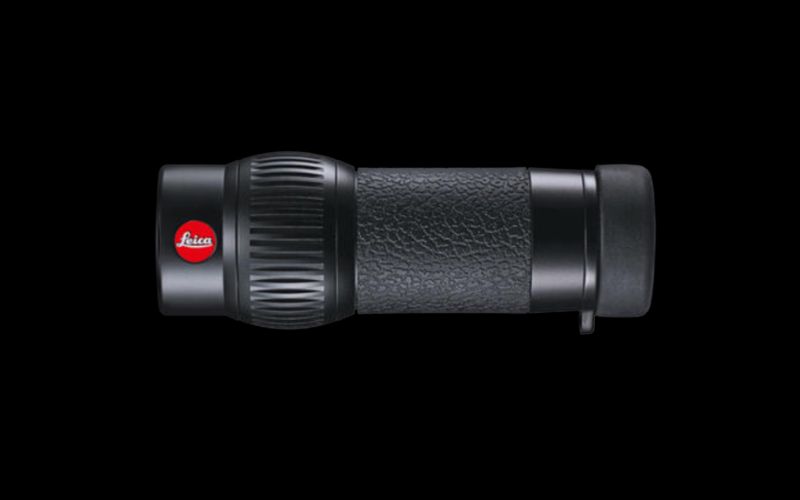
Leica. I promised premium, and have delivered it with the Monovid 8x20. It may be small, but its big reputation precedes itself. With a cost that is more than quadruple compared to alternatives, is the Monovid all that it's cracked up to be?
Pros:
- 8x magnification
- Extreme close focus
- HDC/AquaDura coatings
- Weatherproof
- Aluminum housing
Cons:
- Price
I know that Leica optics are expensive - it's the tradeoff for quality materials and superior glass. Regardless, if you want the best and if you're willing to pay for it, Leica is a brand I recommend all day, every day.
An aluminum housing keeps the Monovid extremely durable and lightweight. Since this is a Leica, it's not just waterproof in a generic kind of way, it's water-tight and submersible to a depth of 5m - I don't think many monoculars can be immersed into a body of water and survive!
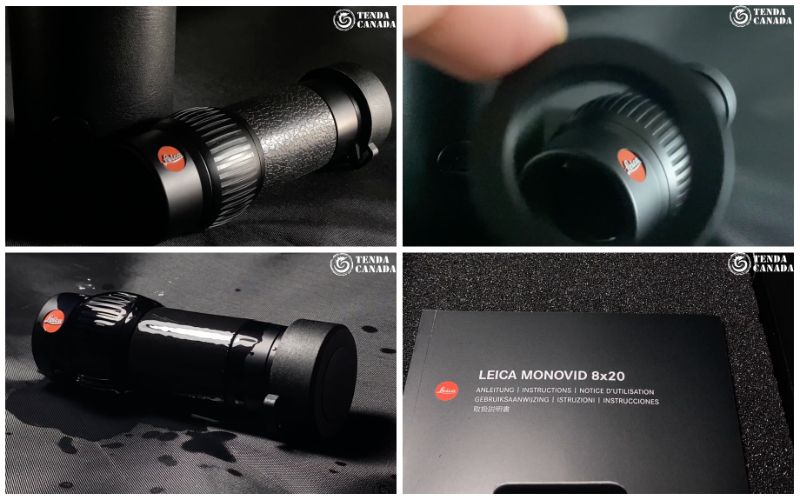
To protect air-to-glass surfaces, AquaDura and HDC (High Durable Coating) coatings are applied for the best viewing and lens protection when out in harsh weather and terrain.
The Monovid has an impressive close focus distance of 1.8 m. But I really like that the close focus attachment provides a close focus distance of 25-30 cm - easily.
Since this mini scope has Leica quality behind it, it's the best monocular for tactical scenarios or surveillance when industry-leading contrast, color fidelity, and resolution is needed to make out minute details.
Only hardcore spenders are going to consider the Monovid. How obsessed are you?
6. Vortex Solo 10X25 Review - Best Monocular for Hunting
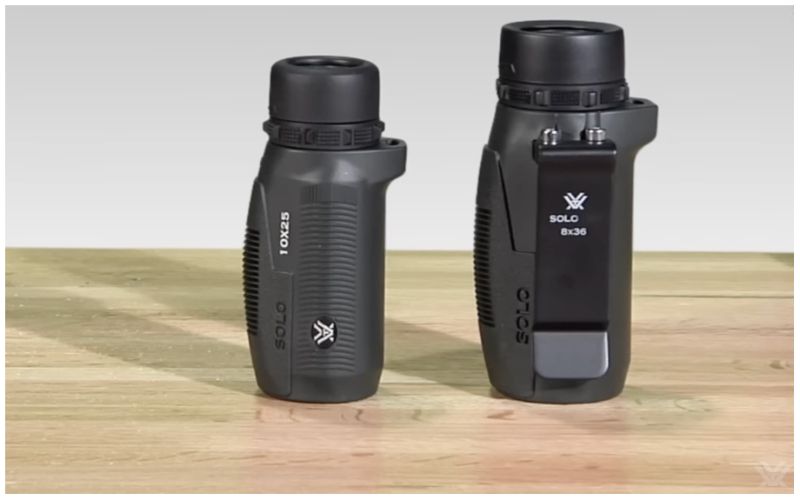
Vortex has easily been a first choice brand for many as their VIP warranty is famously known to be true and honored. The Solo 10x25 comes with said warranty and costs less than $100. For the money, the Solo is guaranteed to be the best valued monocular on the street - or in this case, in the field.
Pros:
- Price
- Lightweight/compact
- Fully multi-coated
- Rubber armored
- Weatherproof
Cons:
- Price

I think so highly of the Solo monocular that I reckon it may be the only monocular you'll ever need to buy. I put it at the top of the food chain with its high 10x power to get you seeing further and its fully multi-coated optics to get you seeing brighter.
Let me be real for a second as it only has a 25 mm objective lens. It's not going to perform in lowlight conditions like a pair of 10x42 or 10x50 binoculars would. But for instant spotting across the brush or plains, the Solo gets it done. Leave the binos behind if you truly want a pocket-sized set of eyes.
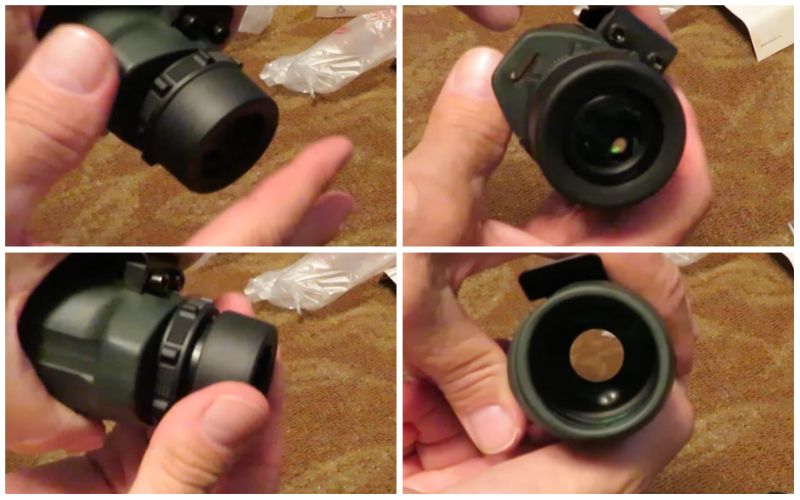
An adjustable eyecup provides 14.5 mm of eye relief, but it will be snug for those of us wearing shades or glasses. I know from experience that Vortex optics are both fog and waterproof just as the Solo mono is. I've always liked the durable rubber armor of Vortex optics too.
I will say that the stiff focus ring might raise an eyebrow or two, but it shouldn't feel like it's welded down. If it's unreasonably stiff, good thing it's a Vortex and it's backed with the VIP warranty, right?
7. Vortex Solo R/T – Best for Target Shooting
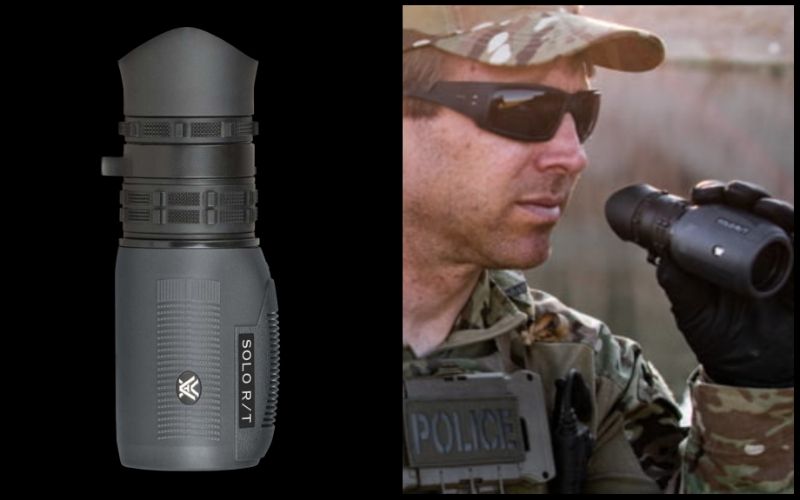
The Solo R/T is an asset at the target range for calling corrections or for quickly estimating range on your targets. Priced cheaper than the Recon R/T, the Solo is an affordable and worthy buy for non-professionals.
Pros:
- 8x36 configuration
- Mrad ranging reticle
- Good eye relief
- Reticle focus
- Vortex tough
Cons:
- Not tripod adaptable
Unfortunately, I imagine that it can be difficult to gain a completely steady image with 8x power when milling a target - if you practice that. With no ability to mount it to a tripod, some of its effectiveness is decreased. However, some have gone the extra mile and rigged a setup for mounting to a rifle or tripod. Worth mentioning, the Recon R/T model has a tripod mount.
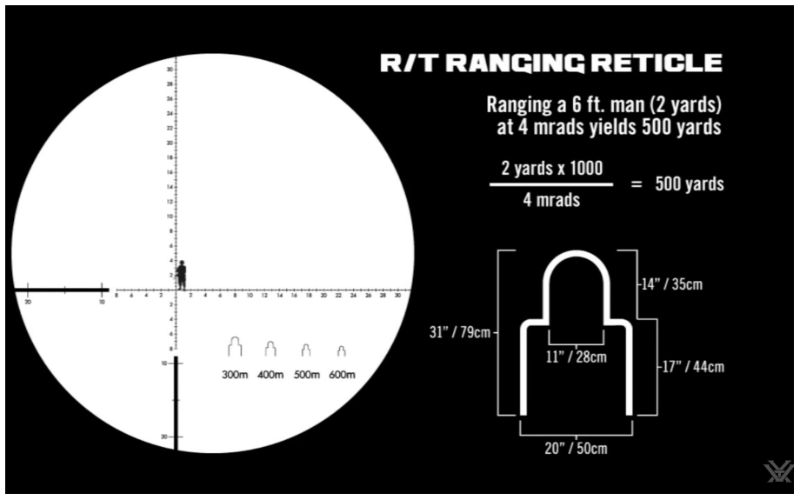
The ranging MRAD reticle has 300–600-meter quick ranging silhouettes off-centered to the reticle. The first 10 mrads are in 1 mrad increments and then every 10 mrads thereafter. The 12 and 3 o’clock crosshairs continue in 1 mrad increments with numbered references every 5 mrads.
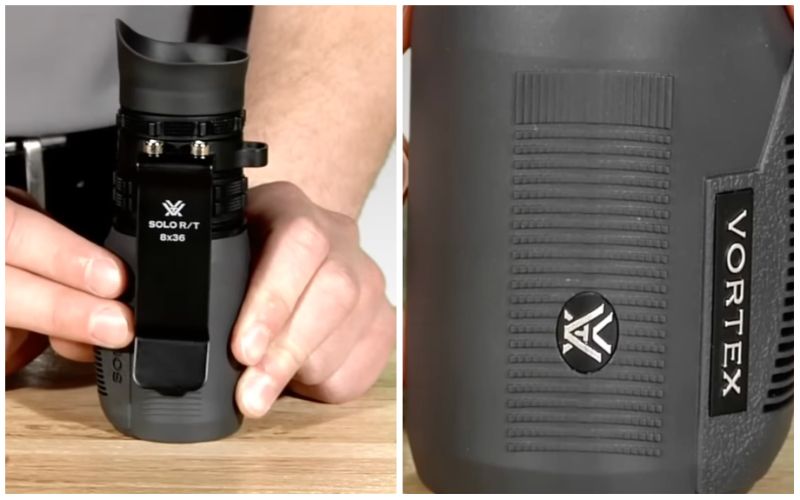
I expect the Solo R/T to be appropriate for some 3-gun comps, target shooting, and of course, as an observational tool for casual use. I'd think it'd have some use in hunting too. Given that the reticle does not obstruct the view, it remains a high-performing, FMC-coated monocular with maximum clarity and brightness in applications where the reticle is not needed.
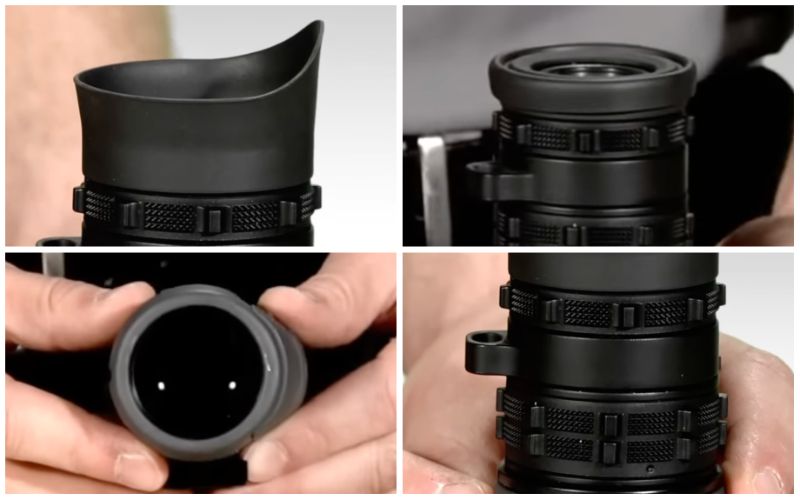
It has the much-needed adjustable features such as the diopter, focus, and eyecup. With eye relief of 18mm, I say it should fit those who wear glasses well enough. Even though it’s under $150, it’s not without Vortex-tough quality. It’s been nitrogen-purged and O-ring sealed for protection from both water and internal fogging.
To add value to the already affordable monocular with a reticle, the Solo R/T inherently comes with the Vortex VIP warranty.
8. Zeiss Mono 6X18 T Review - Best Under $500
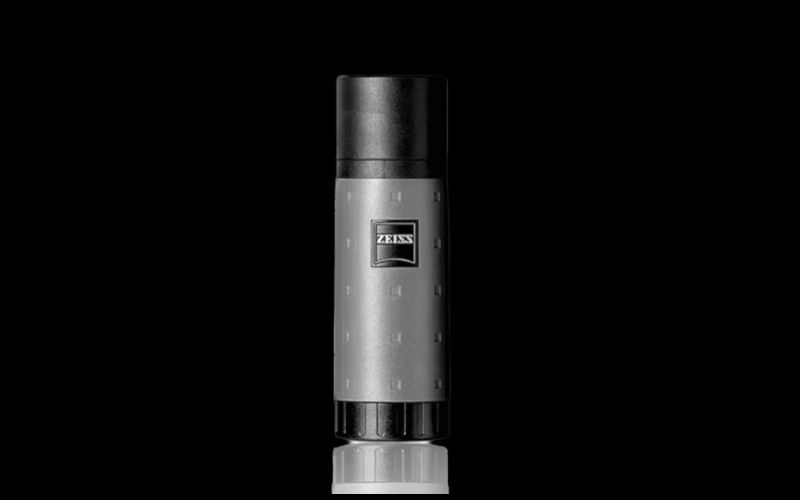
When considering optics from Zeiss, prices may be just out of reach for most. Like all of their optics, the Mono 6X18 T monocular has a lot of offer, but are you willing to flip the bill for one?
Pros:
- Extremely compact
- Extremely lightweight
- Schmidt-Pechan prism
- Extremely close focus distance
- Wide field of view
Cons:
- Price
The Zeiss monocular is slim and sleek - an iconic feature for the German brand. I praise its meager 3.7" height and 2 oz weight. I think it gives a whole new meaning of compactness when you're looking to shed weight and increase covertness.
I recognize that its highlight feature is the extremely close focus distance of just 30 cm - use it like a magnifier for up-close details. This is an ideal feature for those with low vision or who are looking to scrutinize the makings on display at a fine art gallery or at a museum.
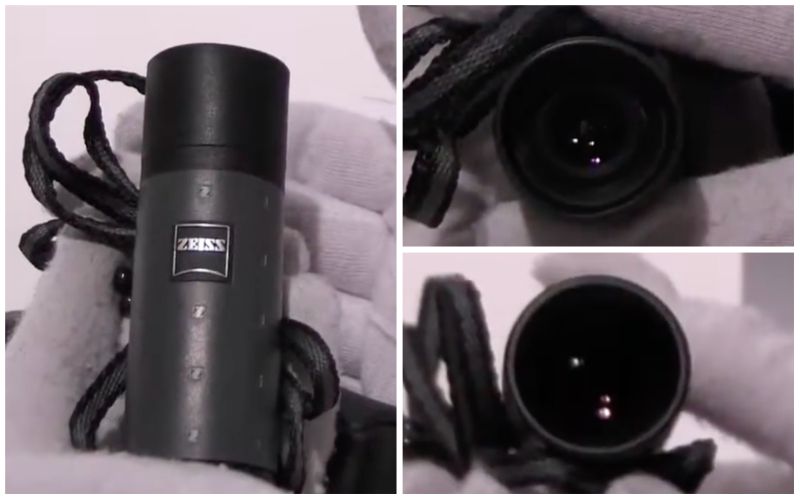
Simultaneously, it's also a high-quality, long-viewing, miniature telescope. With 6x magnification, you have a good field of view range of 120 m at 1000 m. The mini mono isn't looking so mini now after all, right?
Because this is a "T" model, it has Zeiss' patented T* anti-reflective coatings to boost maximum light transmission for the brightest sight picture this 6x18 monocular can produce. For its price point, I recommend protecting your investment inside the included soft leather pouch. Conveniently carry it around with the included carry strap too.
The monocular is designed to be portable, convenient, and superior in optical quality to all else on the market. It does exactly as it's advertised to do and will be a boon to your needs if you can afford it.
9. Carson BlackWave – Best Under $50
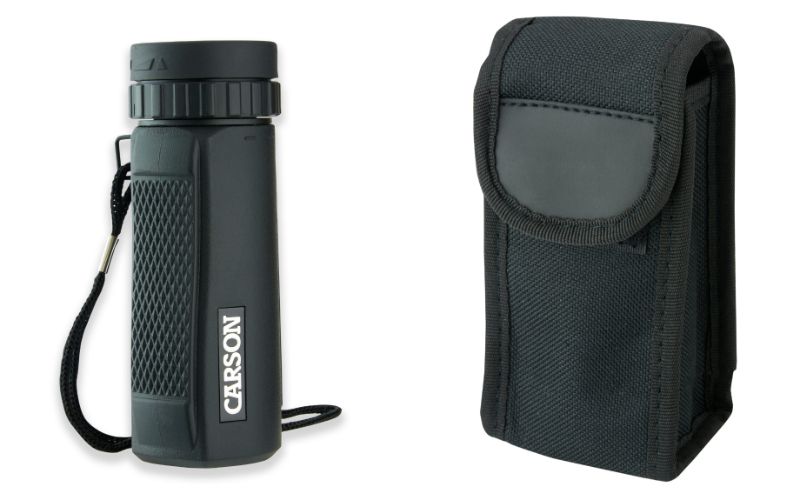
The BlackWave is a mini monocular with 10x power for big seeing. Due to its compact design, it’s easy to hold in the hand, toss into a pouch, or stow in a pocket. If you’re going to buy budget, you should do it with a known optics brand. Carson offers a pocket-size monocular at a pocket-size price.
Pros:
- Price
- 10x25 configuration
- Glass lenses
- Waterproof
- Lightweight/compact
Cons:
- Short eye relief
For a monocular under $50, one must appreciate the quality in the BlackWave. It has BK7 glass to form the prism and then the chamber is purged with nitrogen gas for fogproof protection. The BlackWave is advertised as being waterproof and having been dry-gas-purged, I'd say it's likely water-resistant.
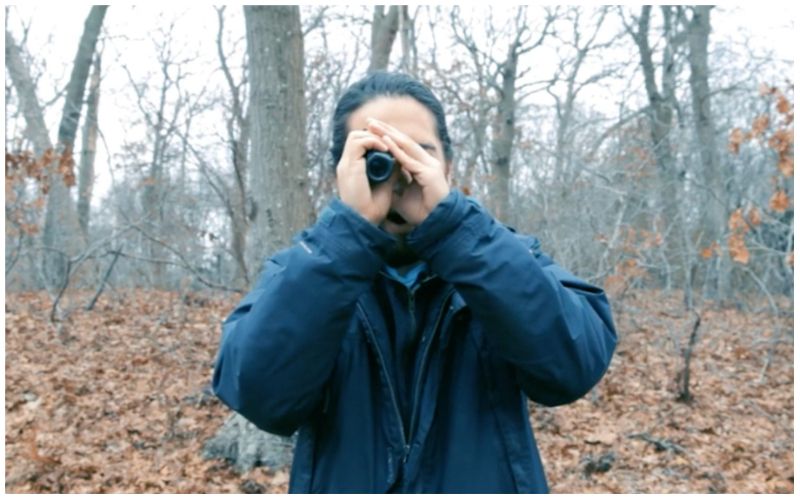
For 10x power, I'm impressed with its compact and lightweight size at 1.5 x 1.5 x 5” and 4.32 oz. Part of its small size is due to its 25mm lens, so it’s not going to be a lowlight performer as it is more of a daylight champ.
With 10x magnification and small body, I recommend steady hands to get a stable image especially since it lacks a tripod receiver. However, the 10x is excellent for those who need magnified power for close-range work with a close focus distance of four feet.
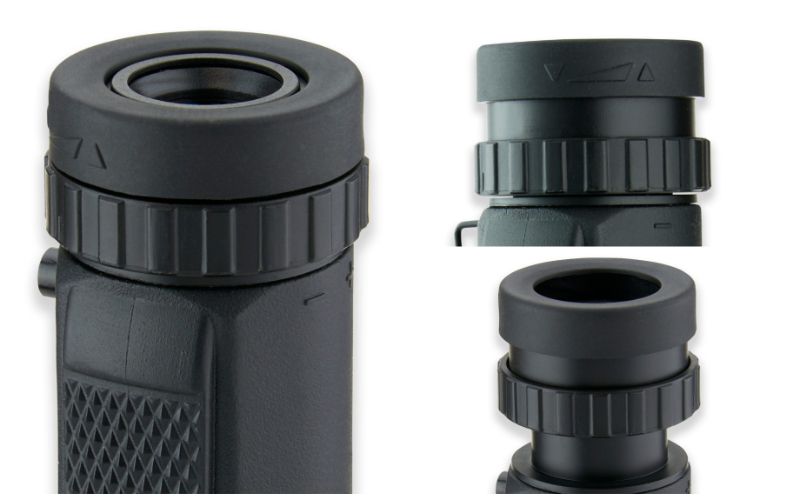
Those with glasses, like myself, will have a difficult time using the BlackWave. This is due to the short 12mm of eye relief even with the adjustable eye cup. The Carson monocular comes with a soft pouch for storage, lens cloth, and a strap, and it’s covered by their No Fault Warranty.
As a result of its ultralight, small size, and very low price point, I recommend the BlackWave for casual applications like birdwatching, quick scans in the hunt, and possibly some covert applications.
10. Vortex Recce Pro HD 8X32 Review - Best Under $300

The Recce Pro HD monocular is embodies everything tactical. It's a drool-inducing unit for the shooter who's after sub-MOA groups and high-precision accuracy. With a mil-based reticle, ranging silhouettes, and ED glass, you could improve your sharp-shooting skills sooner rather than later.
Pros:
- ED glass
- XR coatings
- Ranging reticle
- Lightweight/compact
- Weatherproof
Cons:
- Folding eyecups
Let's face it, the more tech and quality, the more it's going to cost. Some features are sure to push a price tag beyond that of average monocular costs. I will recommend that if you want the better quality, be willing to pay for it.

I'm accustomed to having the benefits of ED glass that minimizes the effects of chromatic aberrations and enhances resolution for crisp and bright viewing. As a premium monocular, you must demand it and I'm glad the Recce Pro has it. Vortex also applies the lenses with XR Fully Multi-Coated anti-reflective coatings to push light transmission rates above average.
The hash-marked MRAD reticle allows for windage, holdover, and ranging calculations. The reticle display also has multiple silhouettes for quick ranging. It's easy to adjust the reticle to be sharp and crisp with the diopter that is separate to the focus ring. I like this feature because my vision requires correction.
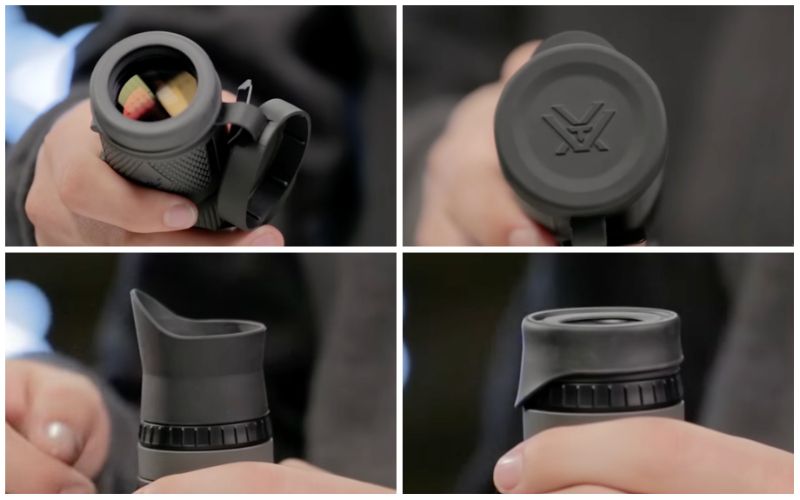
Unfortunately, it has a flared eyecup with its folding design. I'm not a fan of fold-up eyecups, and it's a shame to see it on a high-end unit, but it does a great job at keeping out glare and stray light. Plus, the integrated utility clip that's also compatible with the included MOLLE/PALS pouch might help to get over it. You tell me.
11. Gosky Titan 12X50 Review - Best to Use With Smartphone
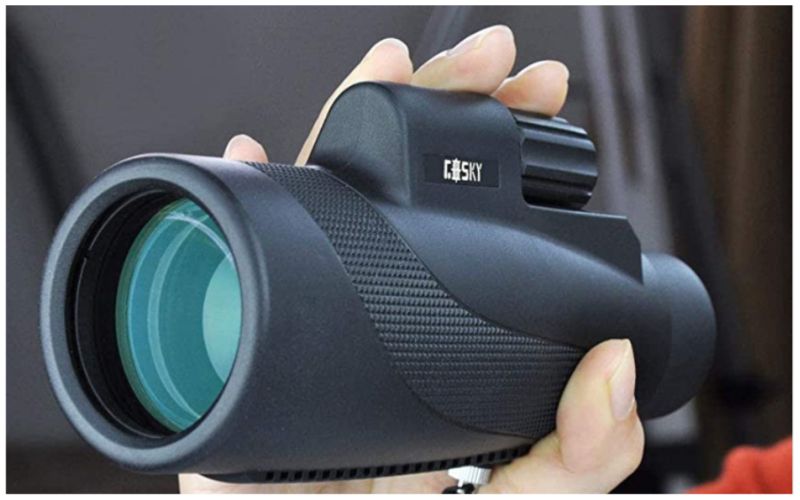
Titan - it's a popular name for a monocular. It could be because it alludes to having a behemoth amount of features and quality for an ironically small device.
Pros:
- Price
- Smartphone capability
- High power
- BaK-4 glass
- Weatherproof
Cons:
- Some quality control issues
I deem the Titan's standout feature to be its smartphone capability. It has Gosky's quick alignment smartphone adapter. It's compatible with most iPhone, Samsung, LG, and more cellphones. Hook it up and get ready to bring out your inner photographer skills.
With high 12x magnification and a large 50 mm objective lens, your ability to capture images and watch wildlife in low light conditions is dramatically improved versus monoculars with lower and smaller configurations.
Though I admire its surprisingly compact 2" x 3" x 5" size and 14 oz weight, I recommend mounting to a tripod to get the most steady image possible for digiscoping.
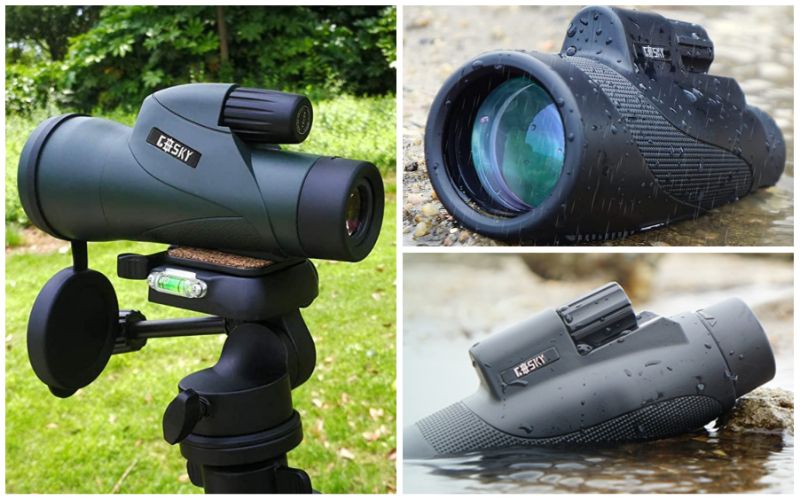
I like that it has BaK-4 glass that makes up the roof prism assembly which has a higher light transmission rate than BK7. With fully multi-coated optics, twist-up eyecups, and a completely sealed and nitrogen-filled housing, you have a monocular that's made to last, is easy to use, and will provide good photos anywhere, any time.
I warn you to be aware of quality control issues when buying a monocular with a ton of features for such a low price. Make sure to fully inspect and test out your monocular upon box opening. I think Gosky customer service seems responsive and eager to remedy any potential issues. Their products wouldn't be this popular if they weren't!
12. Carson CloseUp 6X18 Review - Best Compact Monocular

Monoculars don't get smaller than the Carson CloseUp. It's not just a small monocular, it's a tiny optic that takes portability to a whole new level. To match its miniature design is a miniature price. Is the CloseUp a joke or a toy? It's neither.
Pros:
- Price
- Smartphone capability
- High power
- BaK-4 glass
- Weatherproof
Cons:
- Quality control issues
The CloseUp, as mini as it is, is a real monocular. It has real glass with fully coated optics, 6x magnification, and an 18 mm aperture. While the field of view isn't exaggerated for a 6x monocular, it still offers almost 150 ft at 1000 yards.

This compact monocular redefines scaled-down dimensions with its 3" x 1" x 1" (approx.) size and 1.6 ounce weight. I find that it's not just useful for its micro size but that it can still be put to work for its microscopic ability with its 10" close focus distance.
You can literally have the Carson monocular in your pocket at all times and forget it's there. Low vision reading, hiking, sight-seeing, and camping are all great uses for this small monocular, but I wouldn't say it's good enough for tactical or hunting applications.
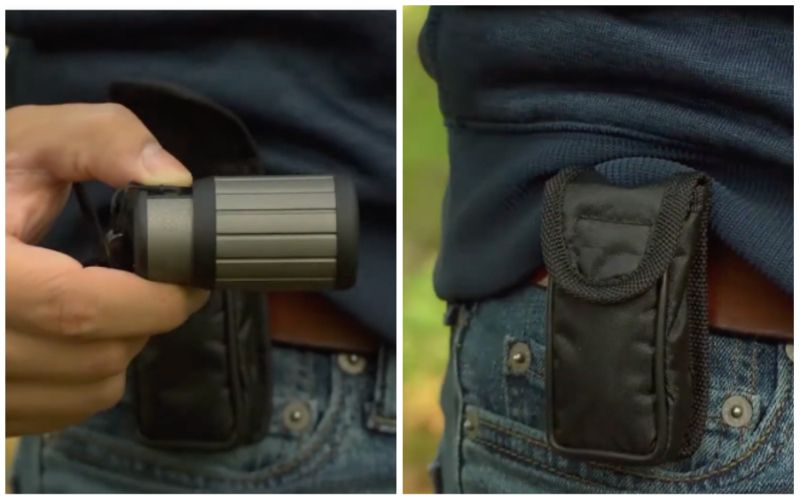
With various issues reported including focusing difficulty, it's a relief to know you're buying from a trusted brand. Carson customer service reaches out to the masses about any issues they may have, and I can personally attest to the quality of their customer care.
The CloseUp, as its name suggests, is an excellent low vision monocular for getting up close and personal for microscopic views. For that reason alone and the fact that it's so cheap, it's worth it.
13. Archeer 16x52 – Best Under $20
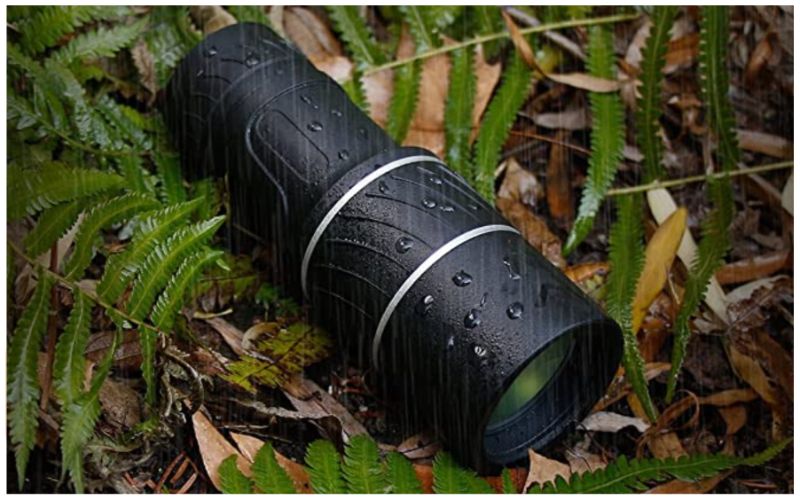
The Archeer 16x52 is a big monocular at a small price point of under $20. While its specs are indeed big, there’s only so much a budget monocular can offer. Best suited to recreational use, the Archeer offers magnified seeing for casual observation.
Pros:
- High power
- Large objective lens
- BAK-4 glass
- Lightweight
- Fog/waterproof
Cons:
- Not 16x
The Archeer 16x52 monocular is not actually as big as it claims to be. While the 16x magnification sounds huge, its actual performance is closer to 10x. The specs are of interest because it claims a 5.2mm exit pupil which would in fact be right for a 52mm lens with 10x magnification. Despite claims, it’s not a zoom optic but a fixed power one.
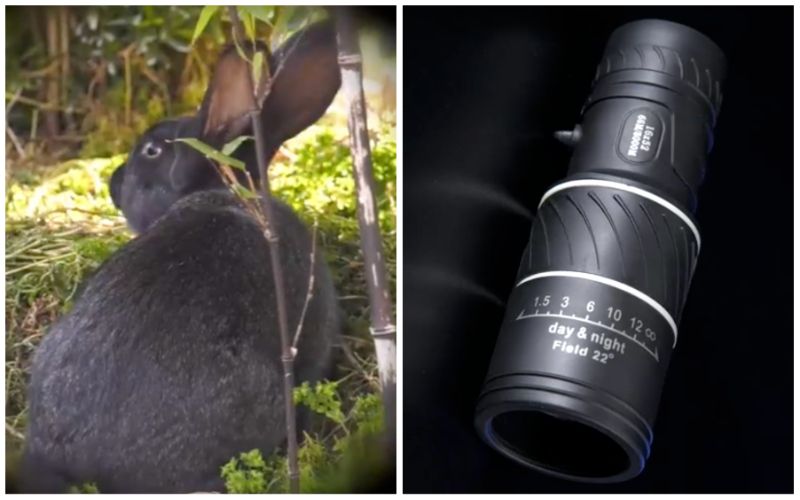
I want to make it clear that it does not have dual focus in the sense of course and fine adjustments. Separating fact from hype, it has an adjustable diopter to focus your dominant eye to help correct for vision problems without use of glasses or contacts. The focus ring is then used to focus the image while observing at distance.
There is plenty of hype in the description but there are notable features I spied that are worth pointing out. The monocular has a roof prism design made from BaK-4 glass with FMC coatings. The housing has also been fitted with rubber armor. These are foundational features that builds an entry-level but solid monocular.
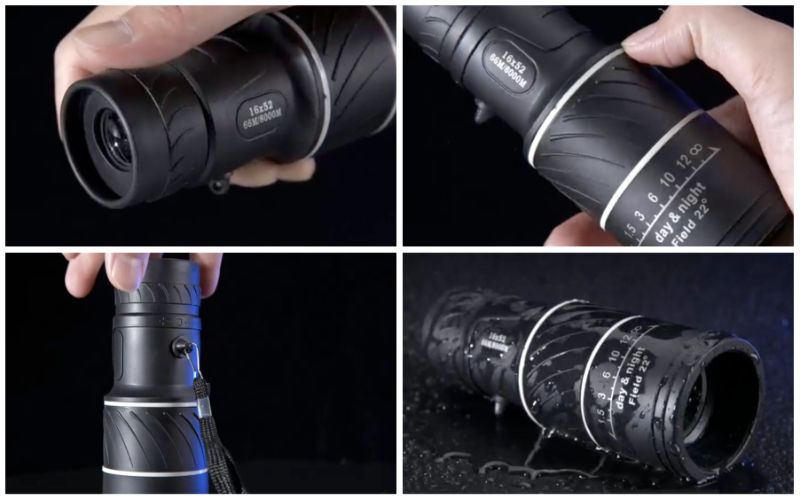
I think it's excellent that it's waterproof and nitrogen-purged for internal protection from condensation. It has good dimensions with a 12.3 oz weight and 6” (approx.) length. With what is assumed to be 10x power, it’s still high-powered and will require steady hands for the best performance. I think it's too bad that it does not have a tripod receiver for mounting for maximum image stability.
The Archeer monocular comes with a neck lanyard and carry case. For an optic under $20, it’s a budget buy with entry-level performance. I wouldn't recommend it for any sort of extended glassing or professional use, but it will perform for casual observation.
14. Firefield Siege 10X50 Review - Best Monoculars for Stargazing
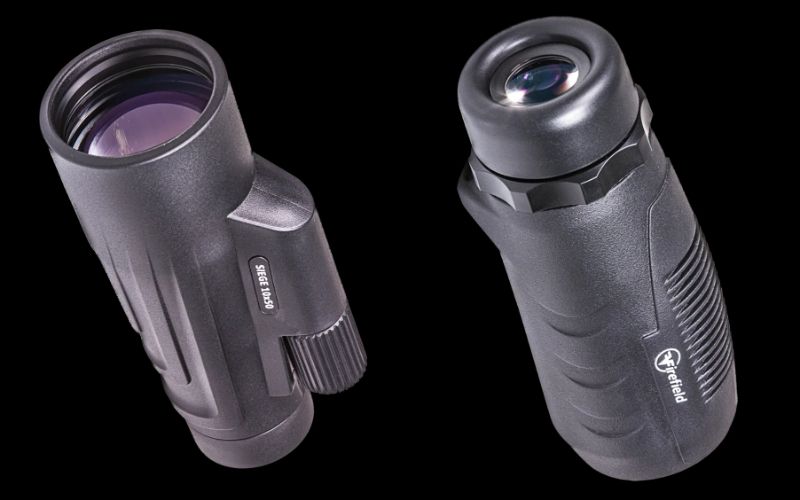
Firefield is an affordable brand in the night vision world. While the Siege 10x50 isn't a night vision monocular, it is an optic that I say would be a great for stargazing. Though it's a monocular that's not well-known, I recognize the quality and benefits it brings to the field and open skies.
Pros:
- Price
- Smartphone capability
- High power
- BaK-4 glass
- Weatherproof
Cons:
- No buyer history
The 10x50 specs of the Siege monocular provides long-range viewing and long glassing sessions. It's a high powered, large aperture unit that can keep you out later as dusk approaches. This is an excellent feature for hunters and law enforcement/military that need the cover of twilight to observe their targets.
As far as stargazing goes, the high power is worth the sacrifice in field of view when you have a darker background and increased detail when finding constellations, double stars, and vast galaxies. While I still recommend tripod mounting it for steadiness while stargazing, it’s lightweight and compact size gives it an edge over 10x50 binoculars - it's small enough to be taken along anywhere without much ado.

I advocate the Firefield Siege for hiking and casual wildlife observation. Again, it's high-powered enough to see crags and pathways during the day and celestial bodies at night. I like that with BaK-4 prism glass, you have a rounded exit pupil of 5mm that is better than the squarish appearance of BK7 glass.
Fully multi-coated optics help to transmit light through the mini scope to the eyepiece. A retractable eyepiece is definitely a bonus feature to see on a monocular this cheap.
While I've branded the Siege monocular as a worthy instrument for stargazing, can serve for observing birds, deer, and when suspicious neighbors are most active. As a multi-purpose monocular, the Firefield optic has won me over.
What to Look For in a Good Monocular
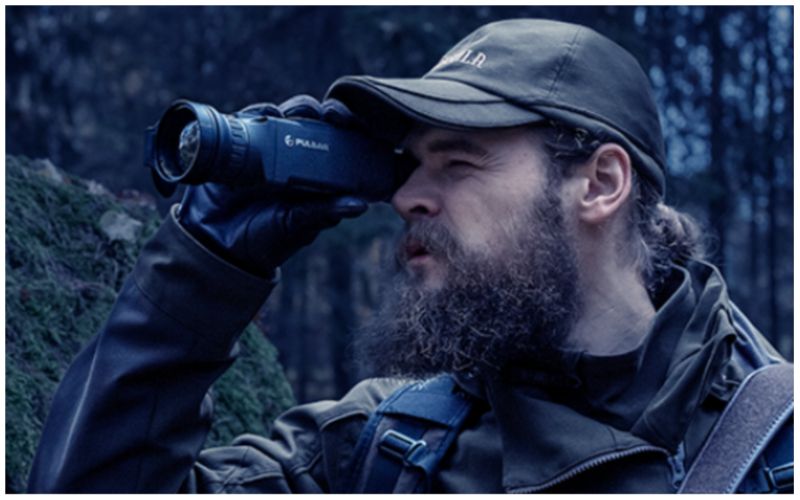
The obvious features of a good monocular is size. It must be small enough to be portable and convenient to use, but it should have clear glass and usable specs for it be worthwhile.
Whether you need a monocular for travel, hunting, surveillance, to read the text on a billboard, or for night vision, keep some main features and considerations in mind.
Size/Weight:
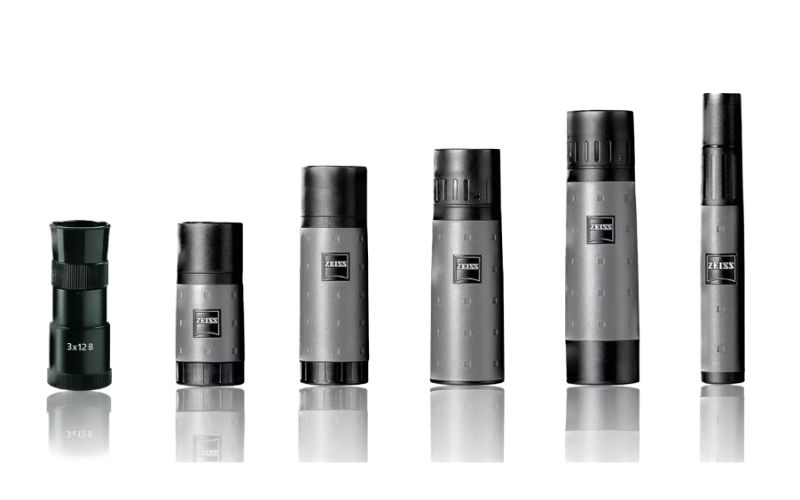
The best monocular will be compact and lightweight. This is their primary benefit as they are excellent portable and handheld devices.
Larger and heavier monoculars will weigh in around 16 ounces and more, and they can even rival compact spotting scopes in size. These monoculars will offer higher magnification and larger apertures.
However, the most compact monoculars can be as slim as a pen and no longer than your index finger, but many will range around 8 oz in weight and 4-5" in length.
| Monocular | Length | Weight |
|---|---|---|
| Maven CM.1 8x32 | 5.1 inches | 8.7 oz |
| Roxant Grip Scope | 5.5 inches | 7.8 oz |
| Emarth Tech Zoom 10-30x50 | 8 inches | 15.7 oz |
| Bushnell Legend Ultra HD | 5.4 inches | 13.2 oz |
| Leica Monovid 8x20 | 3.8 inches (4.13 inches with close-focus lens) | 4 oz (4.4 oz with close-focus lens) |
| Vortex Solo 10x25 | 4.4 inches | 5.6 oz |
| Vortex Solo R/T | 5.4 inches | 10.2 oz |
| Zeiss Mono 6x18 T* | 3.7 inches | 2 oz |
| Carson BlackWave | 5.0 inches | 4.3 oz |
| Vortex Recce Pro HD 8x32 | 6.18 inches | 11 oz |
| Gosky Titan 12x50 | 5 inches | 14 oz |
| Carson CloseUp 6x18 | 3 inches | 1.6 oz |
| Archeer 16x52 | 6.3 inches | 12.3 oz |
| Firefield Siege 10x50 | 6.2 inches | 15.2 oz |
Optical Quality:

There are a lot less moving components and glass elements in a monocular versus scopes and binoculars, but a monocular still requires attention to optical quality.
While high-end monoculars are rare, the best will have ED/HD elements, specialized prism coatings, and protective external coatings.
Monoculars worth buying should have nothing less than fully multi-coated optics to improve light transmission through the optical plane. This just means a bright and clear sight picture - also determined by the configuration (magnification and aperture).
Many units may struggle with various optical distortions such as the more obvious chromatic aberration (color fringing). But given low price points, it's then a matter of personal tolerance and how much it interferes with your application.
| Monocular | Glass & Coatings | Prism |
|---|---|---|
| Maven CM.1 8x32 | ED Glass, Fully Multi-Coasted | Schmidt-Pechan with Dielectric Prism Coatings |
| Roxant Grip Scope | HD Glass, Fully Multi-Coated | BAK-4 Green Film Prism |
| Emarth Tech Zoom 10-30x50 | Fully Multi-Coated | BAK-4 Porro Prism |
| Bushnell Legend Ultra HD | ED Prime Glass, Fully Multi-Coated | BaK-4 Roof Prism |
| Leica Monovid 8x20 | German Glass, Fully Multi-Coated | Roof Prism with Phase Correction Coating |
| Vortex Solo 10x25 | Fully Multi-Coated | Roof Prism |
| Vortex Solo R/T | Fully Multi-Coated | Roof Prism |
| Zeiss Mono 6x18 T* | Zeiss T* Coating | Schmidt-Pechan Roof Prism |
| Carson BlackWave | Fully Coated | BK7 Roof Prism |
| Vortex Recce Pro HD 8x32 | HD Glass, Fully Multi-Coated | Undisclosed |
| Gosky Titan 12x50 | Fully-Multi Coated | BAK-4 Roof Prism |
| Carson CloseUp 6x18 | Fully Coated | K-9 Prism |
| Archeer 16x52 | Fully Coated | BAK-4 Roof Prism |
| Firefield Siege 10x50 | Fully Multi-Coated | BAK-4 Roof Prism |
Eyecups:

The type of eyecup or lack of one on your monocular may not seem like a big deal until you try to use it. Because monoculars are small, some manufacturers don't install a retractable eyecup at all.
This is unfortunately because eye comfort and relief have a lot to do with the type of eyecup. Twist-up/retractable is the best. Flip-up eyecups can be cumbersome but if they work well, they stay down for those that wear glasses. However, flip-up eyecups often offer the best glare and stray light protection benefits.
| Monocular | Eyecup Type | Details |
|---|---|---|
| Maven CM.1 8x32 | Twist-up Eyecups | 4 Multi-Click Positions, snug for glasses wearers. |
| Roxant Grip Scope | Twist-up Eyecups | Good with or without glasses |
| Emarth Tech Zoom Monocular | Folding Eyecups | Typically not as comfortable to use |
| Bushnell Legend Ultra HD | Twist-up Eyecups | Good with or without glasses |
| Leica Monovid | Sliding Eyecups | Suitable for use with or without glasses |
| Vortex Solo | Adjustable Eyecup | Good with or without glasses |
| Vortex Solo R/T | Adjustable Eyecup | Good with or without glasses |
| Zeiss Mono T* | Folding Eyecups | Typically not as comfortable to use |
| Carson BlackWave | Adjustable Eyecup | Short eye relief may create problems for glasses wearers |
| Vortex Recce Pro HD | Folding Eyecups | Typically not as comfortable to use |
| Gosky Titan | Twist-up Eyecups | Good with or without glasses |
| Carson CloseUp | No eyecup | May make bright light viewing difficult |
| Archeer 16x52 | No eyecup | May make bright light viewing difficult |
| Firefield Siege | Twist-up Eyecups | Good with or without glasses |
Eye Relief:
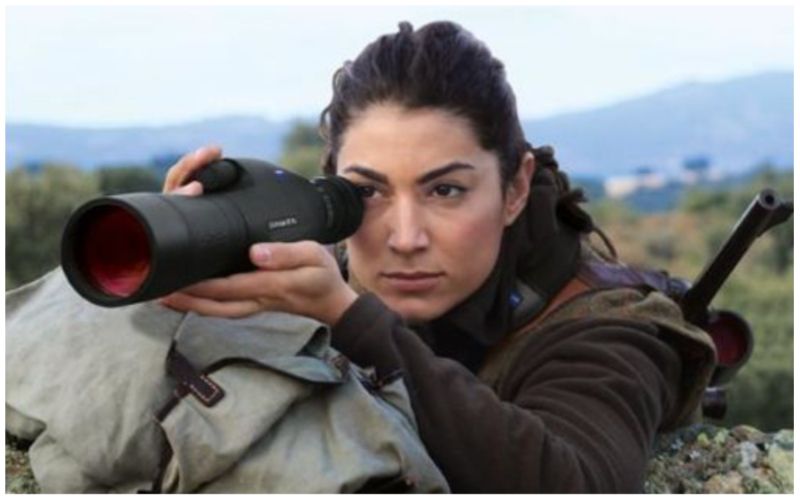
If you can't see the entire field of view, you may not have enough eye relief. If you're pressing your eyes or the bridge of your nose into the eyepiece, you may not have enough eye relief. If you can't wear your sun or prescription glasses with the monocular, you may not have enough eye relief.
Forgiving eye relief is around 20 mm and is ideal for those that wear glasses and sunglasses. However, a minimum of 15mm may be tolerable.
If the monocular offers a diopter, use it. This allows for some correction for near and far-sighted people and can help to make tight eye relief a non-issue. Be aware that some monoculars may not offer enough correction if they offer it at all. Most will allow for sharp internal focus with the central focusing knob.
| Monocular | Eye Relief | Diopter Adjustment |
|---|---|---|
| Maven CM.1 8x32 | 14.9 mm | Yes |
| Roxant Grip Scope | 20 mm | No |
| Emarth Tech Zoom 10-30x50 | 15.4-19.5 mm | No |
| Bushnell Legend Ultra HD | 15.2 mm | No |
| Leica Monovid 8x20 | 15 mm | No |
| Vortex Solo 10x25 | 14.5 mm | No |
| Vortex Solo R/T | 18 mm | Yes |
| Zeiss Mono 6x18 T* | 15 mm | Yes |
| Carson BlackWave | 12 mm | No |
| Vortex Recce Pro HD 8x32 | 14.5 mm | Yes |
| Gosky Titan 12x50 | 17 mm | No |
| Carson CloseUp 6x18 | 10 mm | Yes |
| Archeer 16x52 | Unspecified | Yes |
| Firefield Siege 10x50 | 15.4 mm | No |
Field of View:
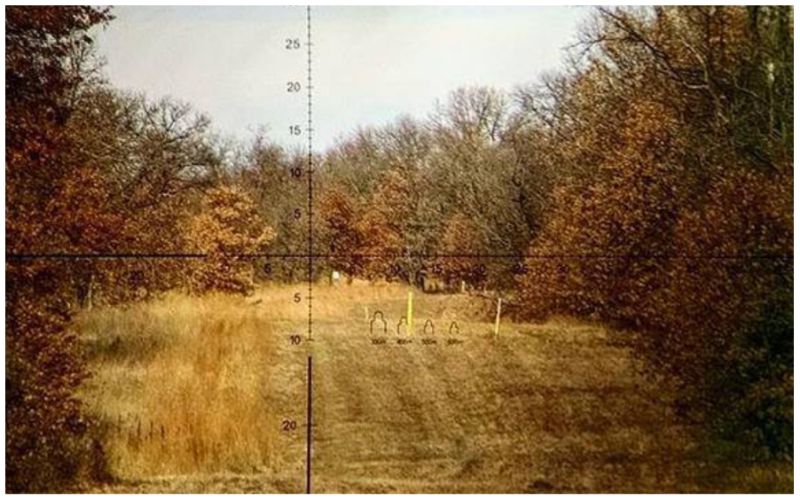
Field of view is the measured distance of an area you can see through the monocular at a given distance. Manufacturers disclose this specification at 1000 m/1000 yards. Low power monoculars will have the widest field of views (aperture must also be considered) whereas high power monoculars will have narrow field of views.
As a guideline, 100-140 yards at 1000 yards is a good standard.
| Monocular | Field of View | Close Focus Distance |
|---|---|---|
| Maven CM.1 | 393 ft/1000 yds | 12 ft |
| Roxant Grip Scope | 180 m @ 1000 m | 8-9 ft |
| Emarth Tech Zoom 10-30x50 | 71-35 m @ 1000 m | Unspecified |
| Bushnell Legend Ultra HD | 340 ft @ 1000 yds | 6.5 ft (2 m) |
| Leica Monovid 8x20 | 110 m @ 1000 m | 1.8 m / 25-30 cm with close focus lens |
| Vortex Solo 10x25 | 315 ft @ 1000 yds | 16.4 ft |
| Vortex Solo R/T | 393 ft @ 1000 yds | 16.4 ft |
| Zeiss Mono 6x18 T* | 120 m @ 1000 yds | 30 cm |
| Carson BlackWave | 273 ft @ 1000 yds | 4 ft |
| Vortex Recce Pro HD 8x32 | 400 ft @ 1000 yds | 5 ft |
| Gosky Titan 12x50 | 289 ft @ 1000 yds | Unspecified |
| Carson CloseUp 6x18 | 150 ft @ 1000 yds | 10 inches |
| Archeer 16x52 | Unspecified | Unspecified |
| Firefield Siege 10x50 | 367 ft @ 1000 yds | 13 ft |
Magnification/Power:
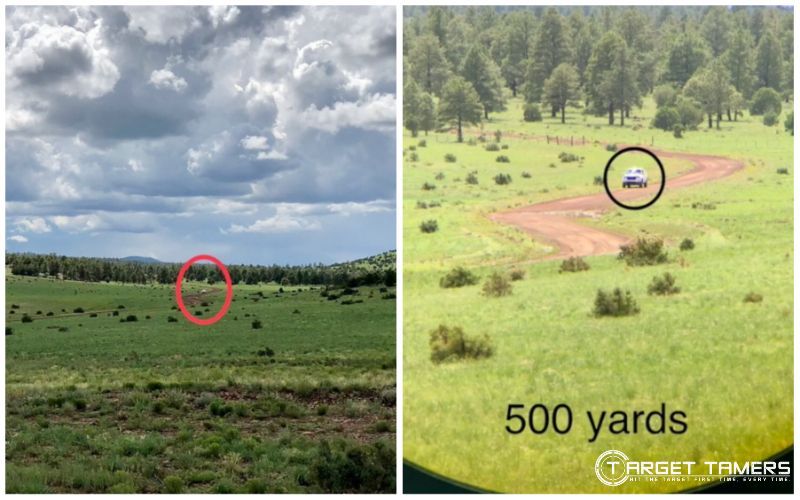
High power means you can see more, but it's only effective if you have a steady hand or are able to mount to a tripod to stabilize the image. 10-12x is the high end for a monocular and offers longer seeing and magnified views but comes with sacrificing field of view.
Low power monoculars are between 4-8x. They offer wide field of views, but many 5x and 6x models are combined with small apertures of 18-25mm. This reduces overall brightness as they're more suited for inside use, low vision, and magnifying benefits.
| Monocular | Magnification | Objective Lens Diameter |
|---|---|---|
| Maven CM.1 | 8x | 32 mm |
| Roxant Grip Scope | 6x | 42 mm |
| Emarth Tech Zoom Monocular | 10-30x | 50 mm |
| Bushnell Legend Ultra HD | 10x | 42 mm |
| Leica Monovid | 8x | 20 mm |
| Vortex Solo | 10x | 25 mm |
| Vortex Solo R/T | 8x | 36 mm |
| Zeiss Mono T* | 6x | 18 mm |
| Carson BlackWave | 10x | 25 mm |
| Vortex Recce Pro HD | 8x | 32 mm |
| Gosky Titan | 12x | 50 mm |
| Carson CloseUp | 6x | 18 mm |
| Archeer 16x52 | 10x | 5.2 mm |
| Firefield Siege | 10x | 50 mm |
Application:
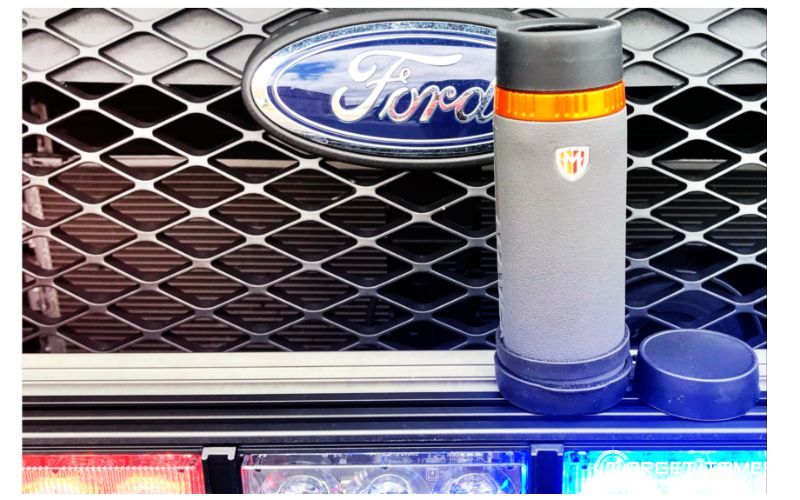
Buying the most appropriate monocular for your needs means being activity specific - what is the intended application it will be used for?
A high-powered, large aperture monocular may be great for hunting or wildlife observation but would not work well for staying covert and can be unwieldy for reading text.
Some specialized monoculars may be more weatherproof and durable for outdoor or combat use, and others may have reticles to aid tactical and shooting engagements.
However, most quality monoculars are great all-purpose optics for many applications.
| Application | Our Recommended Monocular | Price Range |
|---|---|---|
| Birding/Hunting/Tactical | Maven CM.1 | Approx. $150 |
| Camping/Birding | Roxant Grip Scope | Under $50 |
| Range Use | Bushnell 10x42 Legend Ultra HD | Under $200 |
| Surveillance | Leica Monovid 8x42 | Under $500 |
| Hunting | Vortex Solo 10x25 | Under $100 |
| Target Shooting | Vortex Solo R/T | Under $150 |
| Use with Smartphone | Gosky Titan 12x50 | Under $100 |
| Low vision reading | Carson CloseUp 6x18 | Under $20 |
| Short-range Use | Carson BlackWave | Under $50 |
| Stargazing | Firefield Siege 10x50 | Under $100 |
Monoculars VS Binoculars:
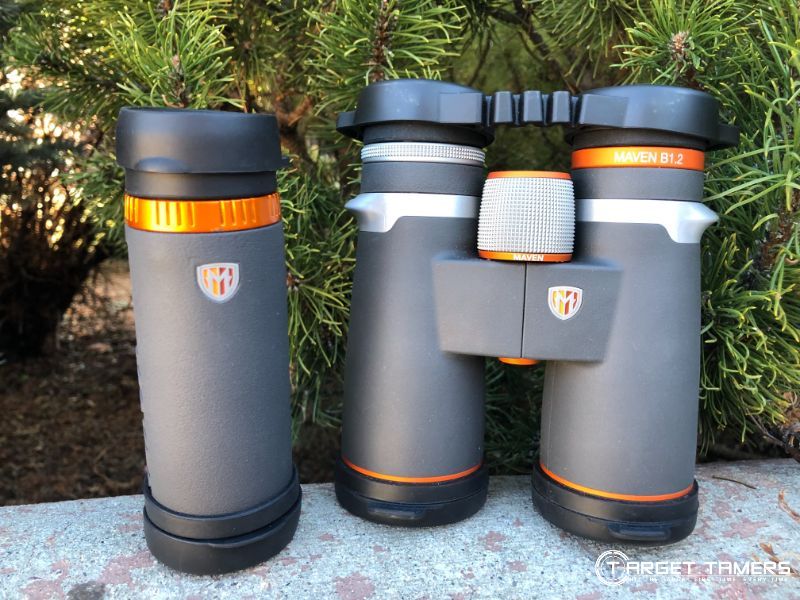
The debate between monoculars VS binoculars is subjective. While a monocular is essentially just one barrel of a binocular, they have different advantages to a user.
Primarily, a monocular is easier to use as you only have one barrel to focus and look through. It's also much more compact and lightweight than a binocular. For the same specs and quality, monoculars are also cheaper.
Binoculars offer dual tubes for natural binocular vision and depth of field. However, they are generally more expensive than monoculars, larger and heavier, and can be harder to focus (collimation) since there are, after all, two tubes.
Considering that monoculars are scaled-down versions of spotting scopes, what are the advantages of upgrading to a spotter? Check out our monocular VS spotting scope comparison guide for more details!
Monoculars: Small But Mighty!
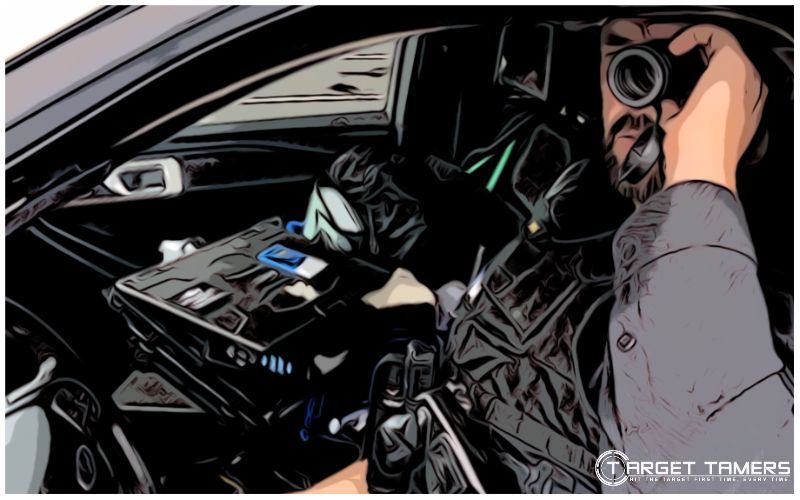
On average, the monocular is one of those things that everyone forgets about until they need the convenience of big benefits in small packages. They are beneficial for multiple situations you will inevitably find yourself in be it travel, hunting, or stargazing.
Don't underestimate the power or convenience of having the right monocular for your intended applications. Monoculars may be small, but they can make all the difference in the hunt, field, or the skies.
Consider the small but mighty power of a monocular.




